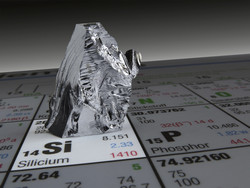Important advances in Photonics Integrated Circuits
With traditional copper cabling showing its limits in data transfer capacity, silicon photonics will be key to guaranteeing the future growth of the ICT sector. Such technology can theoretically enable data transfer speed of up to 1TB per second and allow the industry to keep up with Moore’s law, while considerably decreasing cost and energy consumption. Started in 2013, SEQUOIA targets the heterogeneous integration of novel III-V materials – quantum dot (Qdot) and quantum dash-based (Qdash) materials – on silicon wafers through wafer bonding, with the ultimate goal of developing and demonstrating transmitters having a total capacity of 400Gbps (16x25Gbps). To enable such advance, the consortium is betting on two elements: first, thanks to the properties of their III-V materials, SEQUOIA’s hybrid III-V lasers are expected to result in better thermal stability, higher modulation bandwidth and the possibility of generating a flat wavelength-division-multiplexing comb. Then, by integrating these materials with silicon, the team expects to combine their respective advantages: optical filters can be directly integrated with hybrid quantum dot/quantum dash/silicon lasers to create chirp-managed lasers, boasting an enhanced modulation bandwidth and extinction ratio compared to directly modulated lasers. In a recent press release, project coordinator III V Lab in France announced that the two final PICs demonstrators have successfully been designed: chirp-managed lasers (CMLs) directly modulated at 25Gbps and comb laser integrated with cascaded ring resonator modulators. These PICs, which provide the desired capacity of 400Gbps through the use of 16 WDM channels, promise better performance at reduced cost as well as enhanced functionality through the use of SEQUOIA’s III-V materials and novel integration processes. III V Lab also reports that the quality of Qdot/Qdash materials has been significantly improved during the first period of SEQUOIA, whilst the University of Kassel has recently demonstrated Qdot lasers with a record 34Gbps bit rate in direct modulation. In parallel, Qdot wafers have been successfully bonded onto silicon wafers. SEQUOIA runs until September 2016. If successull, the project will not only allow for improved laser performance, but also for new applications such in sensing technologies, healthcare, safety and security. For more information, please visit: SEQUOIA project website(opens in new window)
Countries
France



